Watermelon Farming in Kenya Guide [updated for 2025]
With high yields, short maturity period, and ready market, commercial watermelon farming is being embraced by Kenyan farmers as a high return cash crop.
Watermelon farming is popular in Kenya because the fruit is in high demand during hot seasons. Watermelon is ninety-two percent water, making it the ideal fruit when it is hot and one is thirsty.
With its origins in the desert of Africa, watermelon is a sweet fruit with pink, red, and sometimes yellow flesh, depending on the variety. It has a green rind and black seeds.
Health benefits of watermelon
Watermelon is one fruit where every part can be consumed, the inner red flesh, the seeds, and even the rind. The fruit is rich in vitamins A, B6, and C, amino acids, antioxidants, and potassium.
150 grams of watermelon contains:
• Vitamin C: 21% of the RDI*
• Vitamin A: 18% of the RDI
• Potassium: 5% of the RDI
• Magnesium: 4% of the RDI
• Vitamins B1, B5, and B6: 3% of the RDI
*RDI - Reference daily intake - daily nutrient intake required to meet the health needs of most of the population
It is also rich in beta-carotene, lycopene, and citrulline, an important amino acid.
The health benefits of watermelon are:-
- Helps in the hydration of the body.
Your body needs to be water, at least 8 glasses a day. With 92% water content, watermelon can add to your daily water requirements.
- Helps in weight loss.
Since watermelon has high amounts of water and fibre, eating watermelon makes you feel full, hence eating less food that contains high amounts of calories and fat. Consuming food that has high amounts of calories and fat is responsible for weight gain.
- Helps the body’s PH balance.
Your body needs the PH levels to be balanced. Most food we consume is on the acid level on the PH scale. Watermelon, being alkaline, helps balance the bodies PH levels, hence improving our health and well being.
- Aids the kidney in cleansing the body.
In our daily activities, the body takes in a lot of toxins from the environment we operate in. It is the work of the kidney to cleanse the body of these harmful substances. The kidney needs calcium and potassium in this detoxifying process. Watermelon Is rich in calcium and potassium, hence eating at least 100 grams of watermelon daily will help your body get rid of harmful toxins.
- May help in improving heart health.
Studies have shown that lycopene, one of the nutrients in watermelon can help lower cholesterol and blood pressure, hence improving the health of the heart. Watermelon seeds, which can be roasted in are high in magnesium, folate, iron and the good fats (monounsaturated and polyunsaturated). These good fats are good at lowering cholesterol levels in the blood.
Roasting Watermelon Seeds.
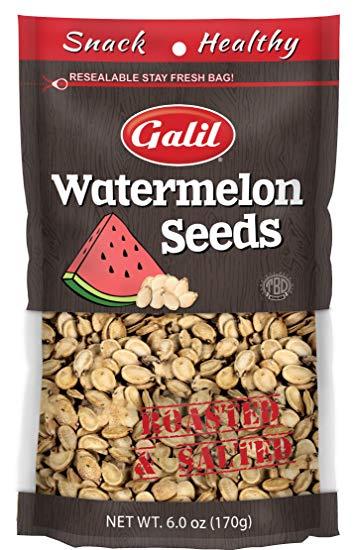
The seeds can be roasted in the oven and eaten as a snack. The process of roasting watermelon seeds is:-
– Set your oven to 325 degrees Fahrenheit / 163 degrees Celcius.
– Place the seeds in a baking sheet. Add olive oil salt and cinnamon. You can even add Chilli pepper, lime juice or cayenne pepper.
– Roast in the oven for 15 minutes, stirring them halfway to ensure they are crispy.
- Helps in digestion.
Watermelon contains 7.5% fibre. Fibre helps in bowel movements, hence improving digestion.
- Lowers inflammation and oxidative stress.
Watermelon contains L-citrulline and, which are powerful anti-inflammation substances.
- Good for the skin and hair
Watermelon is rich in Vitamin A and C. Vitamin C helps the body in producing collagen, a protein that helps in having healthy supple skin and strong hair. Vitamin A helps in the creation and repair of skin cells.
- Helps in improving libido.
Watermelon rind is rich in citrulline, which helps men with mild to moderate erectile dysfunction.
To make watermelon rind tasty, sprinkle some lemon juice and chili powder and enjoy.
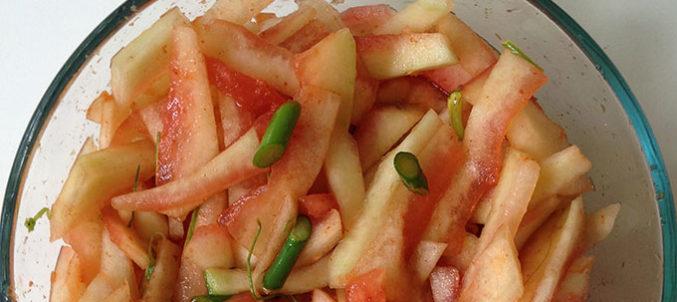
Watermelon Rind Kimchi
Watermelon Varieties In Kenya
While there are thousands of watermelon varieties worldwide, a select few are very popular in Kenya. These include:-
- Sukari F1
- Zuri F1
- Early Scarlet F1
- Sugar Baby
- Asali F1
- Charleston Grey
- Sheet Rose F1
- Andaman F1
- Crimson Sweet
- Sweet Melon Galla F1
- Congo
- Moon and Stars
- Golden Midget
- Orangegio
Zuri F1 watermelon
Zuri F1 is liked because of it’s resistance to some strains of fusarium wilt. It has a strong dark green colored rind and can weigh up to 12Kgs.
Sukari F1 watermelon
As the most popular watermelon variety in Kenya, Sukari F1, is preferred by most farmers. Watermelon farmers in Kenya like it because of it’s early maturity of 80 days, Hard rind that makes it resistant to pests. The hard rind gives it longer shelf life. It is very sweet and fleshy. Sukari F1 yields between 25 to 30 tonnes.
Early Scarlet F1 watermelon
With an early maturity of 85 days, Early Scarlet F1 can weight up to 12kgs and can yield 60 tonnes per acre. It has deep red flesh, with a dark green outer rind.
Charleston Grey watermelon
Charleston Grey has a light green striped rind, with sweet red flesh. It is drought-resistant and matures in 100 days. Charleston Grey can yield at least 20 tonnes per acre.
Sweet Rose F1 watermelon
Sweet Rose F1 is oval in shape, can be harvested in 100 days. It can weight between 10 and 12kgs. The flesh is deep crimson red in colour. It has a good shelf life.
Orangeglo watermelon
With a maturity period of 90 to 100 days, the oblong-shaped orangeglo has sweet, sugary, crisp orange coloured flesh. The orangeglo watermelon can
weight upto 12kgs.
Golden Midget watermelon
The golden midget watermelon can weigh between 1 to 1.5kgs. It is characterized by a golden yellow rind with pink flesh. The fruit turns yellow when ready to harvest. It has a short maturity period of 70 days.
Moon and Star watermelon
Characterized by small circles (stars) and one or two moon-shaped circles, the moon and stars watermelon has a maturity period of 90 days. It can weigh between 9 and 12kgs. It has a dark green rind, with bright yellow spots. The flesh is brilliant red in color and is very sweet. The leaves are speckled yellow in colour.
Congo Watermelon
With a maturity period of 90 days, the congo watermelon can weigh 22kgs. It is a gigantic long watermelon with a dark green stripped rind.
Sugar Baby Watermelon
With a maturity period of 75 days, the sugar baby watermelon has small size fruits that do not weigh more than 5kgs. It has sweet red flesh with light green colored rind that has dark stripes. Sugar baby can yield up to 75 tonnes per acre.
Asali F1 watermelon
Asali F1 is an oblong-shaped watermelon with a dark green stripped rind. It has a maturity period of 85 days. Asali F1 yield per acre is 40 tonnes. It has a large fruit with sweet flesh. Asali F1 is resistant to fusarium rot and anthracnose.
Andaman Watermelon
This watermelon has a green rind with no stripes. It is suitable for growing in a greenhouse under irrigation. It has strong vines, weighs up to 8 kgs and can yield 30 tonnes per acre.
Crimson Sweet Watermelon
Crimson Sweet watermelon has a deep red sweet flesh. It can weigh between 8-10kgs and has a green rind with dark green stripes. It matures in 85 days. Crimson Sweet watermelon is resistant to fusarium rot and anthracnose.
Sweet Melon Galla F1
Sweet Melon Galla F1 has a light green juicy flesh. The rind is yellow and brown in colour. The fruit weighs one to 2 kgs. The maturity period is between 65 and 80 days. Sweet Melon Galla F1 yield per acre is 25 tonnes.
The market for watermelon in Kenya
Climate Requirements for watermelon farming in Kenya
Watermelon is a warm-weather crop, with the optimal temperature being 22 degrees Celsius and 28 degrees celsius. Lower temperatures result in lower yield and quality.
The altitude for growing watermelons ranges from 0 to 1500 metres above sea level, with rainfalls of 400 to 400mm per year.
Soil Requirements for watermelon farming in Kenya
Watermelon should be grown in well-drained soils with a pH of between 6.0 to 6.8. This means that watermelon will do well in soils that are slightly acidic.
Land Preparation, Planting in watermelon farming in Kenya.
The recommended spacing for watermelon is 100 centimetres to 150 centimetres between rows and 90 centimetres to 100 centimetres between plants. This spacing will give enough space for the watermelon vines to spread (run)
Since watermelon does well in soils rich in organic matter, incorporate manure well into the soil at the rate of 8 tonnes per acre. Another option is to apply a handful of manure per planting home. This should be done 2 weeks before sowing the seeds.
Propagation of watermelon.
Watermelon seeds are sowed directly in the field. This means that there is no need of setting up a nursery for your watermelon crop.
You will need 600 grams to 1200 grams of watermelon seeds per acre. This variance depends on the watermelon variety and the spacing used.
When you are ready to sow the seeds, soak them in water overnight. This will help speed up germination.
Apply DAP or TSP fertilizer at the rate of 80 kilograms per acre. This is equivalent to one teaspoon per planting home. DSP is recommended for watermelon because it’s higher amounts of phosphorus. Phosphorus is used for proper root development in watermelon.
Make sure you mix the fertilizer with the soil in order to avoid burning the seed. Sow 2 watermelon seeds per hole, at a depth of 2 centimetres to 4 centimetres.
Irrigation in watermelon farming in Kenya
Watermelon requires a lot of water, but care is needed so as to ensure that they receive the required amount of water. Too little water, especially during the flowering stage will lead to poor fruit formation. This will lead to lower production.
Too much water will lead to watermelon fruits cracking and splitting. They will be sugarless and tasteless.
Intercultural Operations in watermelon farming in Kenya
Intercultural operations are all activities carried out on the watermelon farm after sowing and before harvesting. These include weeding, top dressing, pruning, mulching, etc.
Weed management is watermelons
It is good to keep your watermelon plot weed-free. Watermelon vines have shallow roots, just as many weed plants. This means they will compete for the much-needed nutrients. Take care not to bruise the watermelon roots when removing weeds on your watermelon farm.
It is advisable to remove weeds when the soil is dry so as to avoid spreading bacterial and fungal diseases.
Topdressing in watermelon farming
You will need to top dress your watermelon plants twice with CAN fertilizer.
The first topdressing with CAN fertilizer is done when the watermelon vines start to spread. CAN fertilizer is applied at the rate of 40 kilograms per acre.
The second topdressing is done when the vines start to produce flowers. This is done at a rate of 80 kilograms per acre.
Mulching watermelon vines
Mulch application on watermelon farms is done using leaves (dry) or straw. The advantages of applying mulch on watermelon fields are to conserve water, to prevent weeds from growing, and to protect the watermelon fruit from pests and diseases since it is not in direct contact wit the soil.
In order to get watermelon fruits that have consistent colour, it is advisable to turn the fruit regularly.
Pruning watermelon vines
Pruning watermelons includes the removal of leaves, vines, and fruits. This ensures that the vines focus all the energy on the few remaining fruits.
When pruning watermelons, remove:-
- Dead shoots and leaves
- Shoots and leaves that are turning yellow
These should be removed at the junction where they connect to the main vine. Make sure you do not prune when the leaves are wet so as to prevent spreading watermelon diseases.
Prune your watermelon vines, leaving a maximum of 3 vines per plant. If you need to harvest bigger watermelons, remove deformed and tiny fruits, leaving a maximum of 4 watermelon fruits per vine.
Manures and Fertilizers in watermelon farming in Kenya
Below is a table showing the summary of the manure and fertilizers required for your watermelon crop.
| Manure/Fertilizer applied on a watermelon farm | Rate | When |
| Manure | 8 tonnes per acre or a handful per planting hole | 2 weeks before transplanting |
| TSP/DSP | 80 kgs per acre | Sowing time |
| Topdressing with CAN | 40 kgs per acre | When plants start to run |
| Topdressing with CAN | 80 Kgs per acre | When plants begin to flower |
Pests affecting watermelons in Kenya
Pest will infest your watermelon plants in order to feed. If not controlled, this will affect your plants and produce.
Root-Knot Nematode
Watermelons are affected by root-knot nematodes, causing the watermelon roots to develop shillings known as galls. A watermelon plant infected with root-knot nematodes will have yellow leaves and stunted growth, leading to poor production
To control root-knot nematodes, apply enough manure to the soil. You can also plant watermelon varieties that are resistant to root-knot nematodes. It is also advisable to practice crop rotation. You can also control root-knot nematodes in watermelon buy using chemical pesticides.
Epilachna Beetles
Epilachna Beetles feed on watermelon leaves, resulting in them shriveling and drying up. The adult of the Epilachna Beetles looks similar to ladybirds
To control Epilachna Beetles in watermelons you can use insecticides, both organic and non-organic.
White Flies
White Flies are small insects with wings that are covered with white powder-like wax. They affect watermelons by sucking sap from the plant. White Flies are also carriers of a virus that causes Cucurbit yellow stunting disorder in watermelon plants.
Whiteflies in watermelon plants are controlled by the use of pesticides.
Spider Mites
Spider Mites damage watermelon leaves, leaving them with whitish-yellow speckles. These yellow-green or reddish-brown insects thrive in areas that are hot and dry,
To control Spider Mites in watermelons, use of mulch to conserve water, while giving the plants enough water. You can also use a predatory mite, Phytoseiulus persimilis from DuduTech that consume spider mites at all stages.
You can also use insecticides to control spider mites.
Watermelon Aphids
The watermelon aphid is a small insect that sucks sap from the tips of the watermelon vines, especially at the points of growth. Aphids in watermelons gather at the bottom of the leaves, sucking sap and produce a secretion known as honeydew, which creates favourable conditions for other diseases. Aphids are also carriers of viruses such as the watermelon mosaic virus, which can adversely affect your watermelon crop.
Watermelon leaves that have been infested by aphids curl die to loss of sap. The entire plant becomes stunted as a result of nutrients being taken by the aphids. The viruses that aphid carry can be disastrous than the direct effects of the aphids.
Aphids in watermelons are controlled by use of:-
- Biological methods such as ladybirds and parasitic wasps.
- Organic methods such as rosemary oil and insecticidal soaps
- Chemical pesticides
- Ensuring the watermelon plants have enough water.
Melon Fly
The larvae of the melon fly make holes on the watermelon fruits, leaving brown holes that secret liquid. Watermelon fruits eventually rot and detach from the vines. The melon fly also feeds on the leaves and vines of the watermelon plant.
The most effective way to control watermelon flies is the use of biological and cultural methods. Use pheromone traps that lure the larvae. You can wrap the fruit in eco-bags that prevent the larvae from attacking the fruits. Destroy all affected fruits by burning or burying them.
You can also use pesticides to control the melon fly, though it is a difficult endeavor since the larvae get inside the fruit, out of reach for the pesticides
| PEST | DAMAGE | CONTROL |
| Melon Fly | Damage fruits. | Use of traps and eco bags. |
| Aphids | Leads to a stunted watermelon vines, eventually affecting production. Carries other disease causing viruses that cause more damage. | Use of organic pesticides Use of chemical pesticidesEnsuring that the plants have enough water |
| Spider Mites | Suck sap from the watermelon plant, leaving whitish yellow speckles. | Adequate irrigationMulching to conserve waterUse of predatory mitesUse of insecticides |
| White Flies | Suck sap from the watermelon plantCarry disease causing viruses. | Use of pesticides |
| Epilachna Beetles | Watermelon leaves shrivel and dry | Use of Insecticides |
| Root-Knot Nematode | Stunted growth of the watermelon plantYellowing leavesPoor Production | Use of ManureChemical pesticidesCrop RotationPlanting resistant varieties |
Diseases affecting watermelons in Kenya
Watermelon diseases can adversely affect your watermelon production, reducing the amount and standard of the watermelons you harvest. In this section, we will be looking at how to control these diseases in your watermelon, and even how to prevent them from happening.
Powdery mildew in watermelon
Caused a fungus that is common in dry conditions, powdery mildew is characterized by a powdery growth that starts on the bottom of the leaves. It later spreads to the upper parts of the leaves.
To control powdery mildew in watermelons, use fungicides.
Anthracnose in watermelon
Anthracnose is caused by fungus that can infect all parts of watermelon plants and fruits at any time in their growth.
Watermelon leaves affected by anthracnose develop reddish-brown spots on the leaves. These infected leaves eventually dry and fall off the plants. Watermelon leaves infected by anthracnose develop spots that produce a pink colored liquid.
The control methods of anthracnose in watermelon plants encompass both cultural disease control mechanisms as well as chemical methods.
The cultural methods of controlling anthracnose in watermelons include crop rotation and sowing disease-free certified seeds.
The chemical methods of controlling anthracnose include using fungicides.
Downy mildew in watermelon
Downy mildew in watermelons is caused by a fungus that affects the leaves of the watermelon plant. The downy mildew fungus is spread through the air.
The leaves affected by downy mildew will develop small spots on the top side. They will frizzle from the edges.
Downy mildew in watermelon plants is managed by pruning so as to reduce the cover of the crop on the farm. You can also use chemicals to control Downy mildew in watermelons.
Fusarium wilt in watermelon
Fusarium wilt is caused by fungus that is spread through the soil watermelon seeds or even the water that is draining from the plants.
Watermelon plants that are affected by wilt will develop brownish discoloration in the lowest term and roots. These symptoms of fusarium wilt will spread through your watermelon farm
To control fusarium wilt in watermelons, practice crop rotation and use clean disease-free watermelon seeds. Remove and destroy all infected watermelon plants.
Make sure you use well-decomposed manure or compost in your watermelon farm.
Black rot (gummy stem blight) in watermelon
Black rot also known as gummy stem blight is a watermelon disease that affects the watermelon fruits, the watermelon stem, and watermelon leaves.
Brown round spots can be seen on the watermelon leaves that are infected by gummy stem blight. These spots eventually turn brown and a thick liquid will emerge from the stem. Watermelon fruits that are affected by black rot become soft. Their colour changes, becoming less attractive.
Gummy stem blight can be controlled by the use of copper-based chemicals.
Watermelon mosaic virus.
Watermelon mosaic virus, spread by viruses is a disease that affects watermelons and other plants in the gourd family of plants.
If your watermelon plants are affected by the watermelon mosaic virus, they will not grow properly. They will be stunted and the space between nodes will be shorter. The leaves and fruits will develop spots.
To control the watermelon mosaic virus clear all the weeds from the watermelon farm as this might be the potential hosts for the disease. Control aphids in your watermelon farm as these are the ones that spread the disease.
Physiological Conditions in Watermelons
You might notice that sometimes your watermelons do not develop well yet you did all you can to control pests and diseases in your watermelon farm.
Your watermelon might develop other issues that are not caused by pests or diseases. These issues are called physiological disorders and they affect the quality of the watermelon fruit. They arise due to nutritional factors, genetic factors, or environmental factors.
The physiological disorders in watermelons are:-
- Watermelon Cross Stitches – Cross Stitches are long injuries on the watermelon fruits that can grow up to two centimeters. Cross stitches appear perpendicular to the length of the watermelon fruit. The causes of cross stitches are yet to be known.
- Watermelon Rind necrosis – Rind Necrosis is a disorder that affects the watermelon rind. The watermelon rind develops brownish textured spots. These spots on the watermelon rind enlarge to form large discolored areas. Watermelon rind necrosis does not spread to the watermelon flesh but remains only on the rind. The cause of watermelon rind necrosis is yet to be identified but it has been found out that it occurs when the watermelon crop is exposed to drought.
- Watermelon Fruit sunburn – Your watermelon fruit may be exposed to intense sunlight, leading to sunburn. This leads to dehydration and damage to the watermelon rind. Sunburn in watermelon can be avoided if the watermelon fruit is covered by watermelon vines or straw. Sunburn mostly affects watermelon varieties that have dark green rinds. Varieties that have grey-green rinds such as Charleston grey are rarely affected by sunburn.
- Watermelon Hollow Heart – Watermelon hollow heart is a condition where the centre of the watermelon fruit cracks. Watermelon hollow heart occurs when the development of the watermelon fruit is hastened.
- Watermelon White heart – This is a condition where the watermelon fruit develops white areas at the centre. Watermelon White Heart is a result of excess moisture and excess nitrogen during the fruit maturation stage.
- Watermelon Fruit burst – this is where the watermelon fruit bursts developing multiple cracks. Watermelon Fruit burst is caused by too much water either by irrigation or rainfall when the fruit is maturing. It is advisable to stop watering your watermelon 2 weeks before harvesting.
- Watermelon Blossom End Rot – Watermelon blossom end rot is a condition that affects the end of the fruit that is not attached to the stalk. The watermelon fruit will soften and change colour to Brown and sometimes to black. The areas affected by the blossom end rot will sometimes start rotting. Blossom end rot is caused by a lack of calcium and lack of moisture. This can be the result of dry hot winds, too much fertilizer, or low calcium levels in the soil.
- Misshapen watermelons – this condition which is also known as bottleneck or gourd neck is a result of lack of moisture. The watermelon fruits become deformed, losing their normal shape. Misshapen watermelon fruits can also be a result of damage to the fruit at a young age, lying in a ground that is uneven or poor pollination.
Harvesting of watermelon in Kenya
Depending on the variety your watermelons will be ready for harvesting in 80 to 120 days. Before you harvest your watermelon fruits you need to determine if they are mature and ready for harvesting, as harvesting immature fruits will lead to losses.
How to tell your watermelon is ready for harvesting.
You will be able to tell that your watermelon is ready for harvesting when you see the following signs
- The spot where the watermelon has been lying on the ground will change colour from white to creamish yellow. This part is known as the ground spot.
- The colour the curly offshoots near the stem of the fruit change from green to brown.
- When you hit the watermelon fruit with your hands it produces a dull sound. On the contrary, immature watermelon fruits produce a ringing sound when slapped.
- Mature watermelon fruits will have deep red coloured flesh that has a crispy texture and a sweet flavour.
- When the sugar content of the watermelon is measured using a device called a refractometer, the result will show that the content is 10% or more near the centre of the watermelon.
How to harvest watermelon
When you are harvesting your watermelon, cut the vine near the fruit. Please note that you should not pull, twist, or break the watermelon vine. Make sure you leave the stalk attached to the watermelon fruit.
Another point of note is watermelons do not continue to ripen after harvesting. If harvested when they are immature, watermelon fruits will continue to develop the red colour of the flesh, but there will be no increase in the sugar content. This means for you to harvest quality watermelons you need to be sure that they are ready for harvesting.
After harvesting. make sure you take care of your watermelon fruit so that they do not develop scratches or injuries. Leaving the watermelon in direct sunlight will cause them to develop sunburn which might be unattractive at the market.
Sort your watermelon to remove cracked or diseased fruits. This includes watermelon fruits that have physiological disorders.
Your watermelon fruits will stay fresh in storage for up to two weeks before they start losing the colour and the crispy texture.
In the Kenyan market watermelon is sold by weight and in some markets by size.
Please signup on the newsletter form below so that you can receive updates when we update this article.

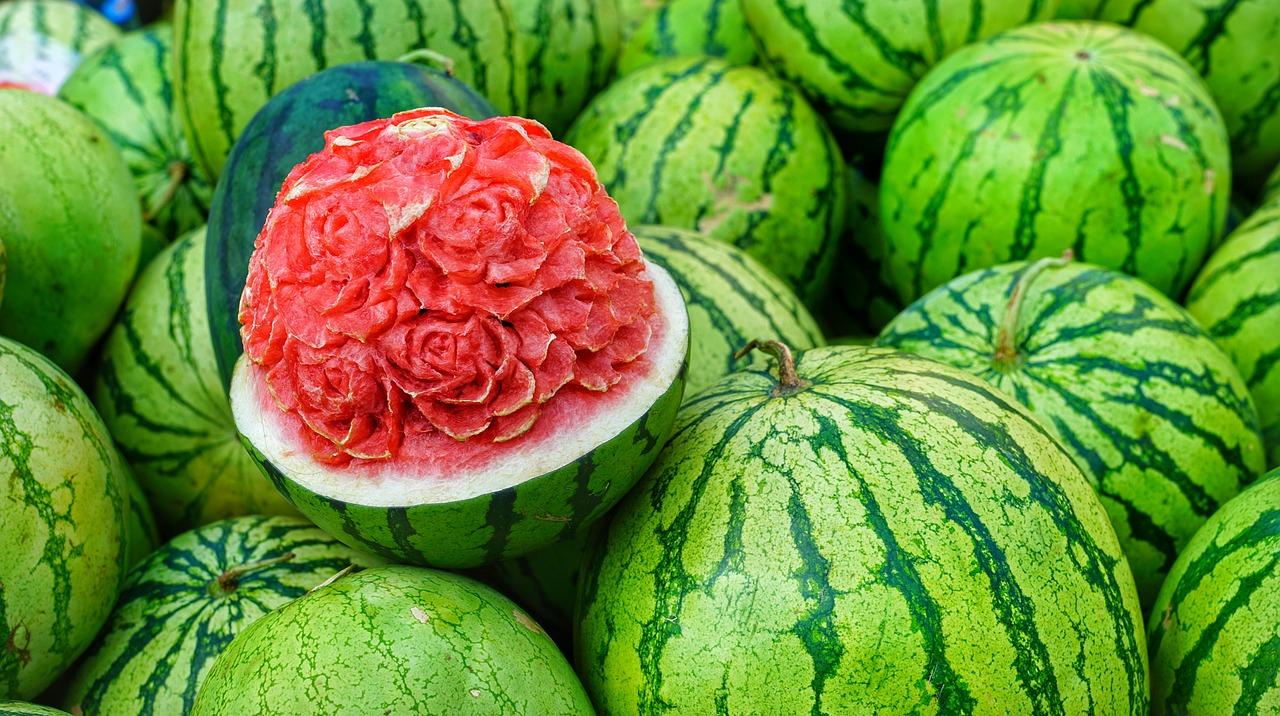
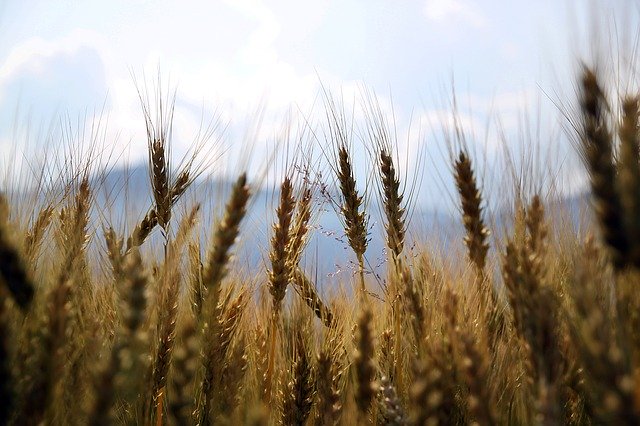
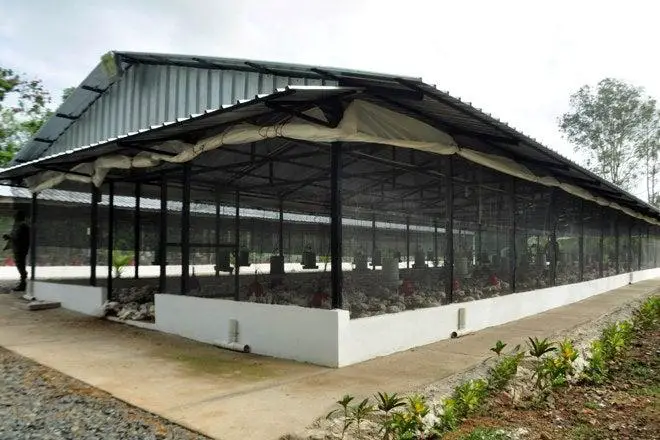
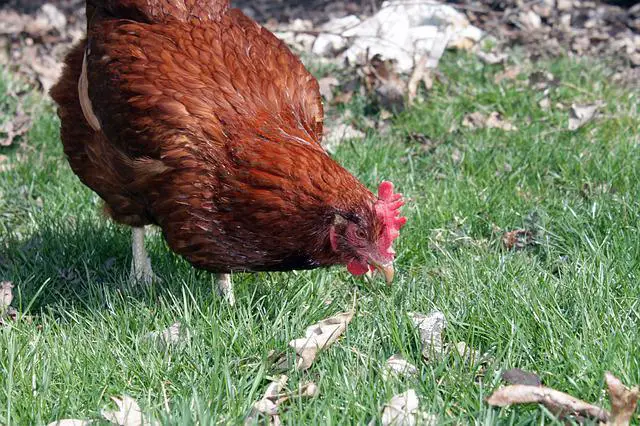
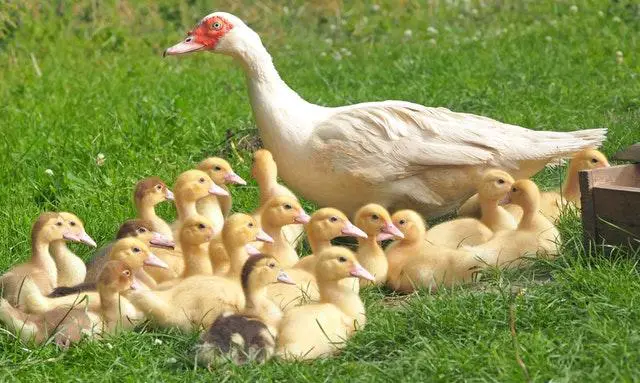
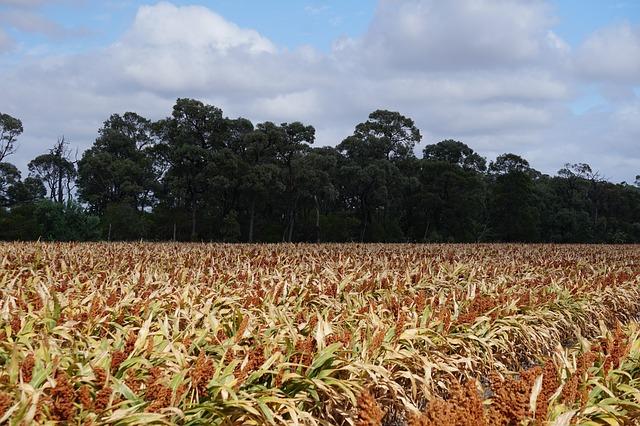
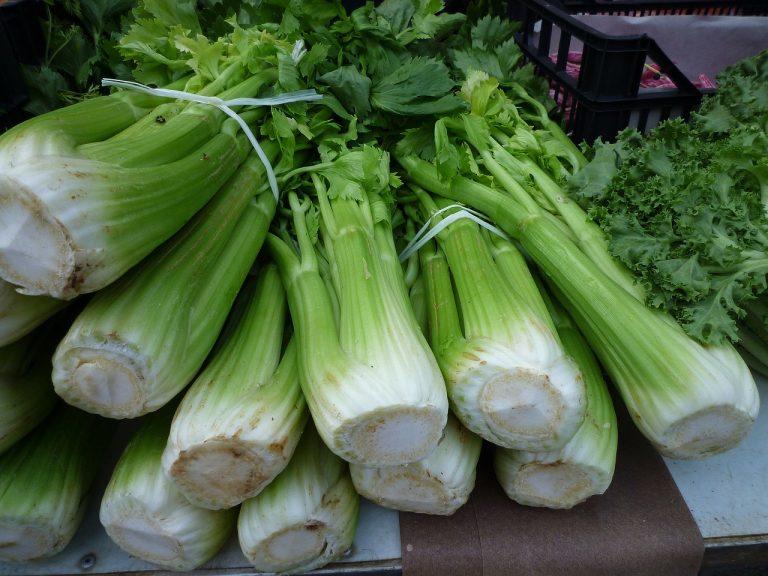
Good content. really…
Good content. really encouranged me to go into farming water melons.
just bought the seeds for trial hoping to benefit from this good explanation.
Excellent guide information
Excellent guide information
Educative and informative…
Educative and informative very inspiring.
Good article…
Good article…
How much can one get in an…
How much can one get in an acre, well prepared and maintained?
How much can one get in an…
How much can one get in an acre, well prepared and maintained?
Great info. Please let me…
Great info. Please let me know if you need to uproot the weak seedling from the two per planting hole, If you need to when is this done. thanks
Hi I want to start…
Hi I want to start watermelon production in Kwale,what are the requirements needed?
Good piece of info here. I…
Good piece of info here. I am into melon farming. This info is really ideal for me as a beginner
When is the best month to…
When is the best month to plant watermelon without irrigation in kenya, especially with the weather in Loitoktok
Hello am planting sukari F1…
Hello am planting sukari F1 20 acres of land , when my employee has soaked 2kg of seedlings using synergizer 0.5g/kg as a mistake, what is likely to happen with my seeds .
Edwin reachable in WhatsApp +254715342703
Nice article.Thanks alot.It…
Nice article.Thanks alot.It stands out as the most informative piece that I have ever read on watermelon and it contains all the information needed by the farmers.
Need more advice
Need more advice
Good and informative
Good and informative
Good information keep it up,…
Good information keep it up, have started farming of watermelon.
You left out the most…
You left out the most important part; costings !!!
When is the best time to…
When is the best time to plant watermelon meaning which month
Very informative . Thank you…
Very informative . Thank you so much .
Very informative, educative…
Very informative, educative and enlightening. Thanks
Thank you for this useful…
Thank you for this useful information about watermelon farming. Am in nyandiwa homa bay sub county. I want to plant 2 acres of watermelons but what still confuses me is the mixture of herbicides to use when spraying and interval between each spraying.
For example:
So can i use Mancozeb/indofil powder, Cyper lacer/roket, supergro fertilizer, vegimax
Can use advice accordingly on the above suggested chemical combination.
Thank you
i have an area with black…
i have an area with black cotton soil, how do i know if its suitable for farming watermelon
Hi,
Need to know what kind…
Hi,
Need to know what kind of soil is good for melon farming, i come from red soil area, could it be ok.
Thank you.. Very useful tips
Thank you.. Very useful tips
Hey I want to plant 8 arces…
Hey I want to plant 8 arces of watermelon at Kwale county ,how kilograms of seeds should I have?
Thanks. Im a farmer in…
Thanks. Im a farmer in Uganda. I found this useful and i have decided to plant 2 acres…! How do i access the Kenyan market in uganda? Any links please.
Regards
Hey isaac , am from Kenya…
Hey isaac , am from Kenya but coming over to Uganda to plant watermelon about 20 acres of the farm , how was the condition of your 2 acres ?
knowlege has been got. But…
knowlege has been got. But assist ugandan farmers with links to markets.contacts of potential buyers
Great information, if…
Great information, if possible kindly update us on the best timing for planting watermelons.
Very useful information on…
Very useful information on melon farming.
Pesticides for sukari F1
Pesticides for sukari F1
I have learnt more.Thank you…
I have learnt more.Thank you and can i market my watermelon your agencies
detailed information on…
detailed information on watermelon, thank you. keep me updated
Hi I want to start…
Hi I want to start watermelon farming in tharaka nithi county is that okay
Hi I want to start water…
Hi I want to start water melon farming in Narok county. Is that area okey?please advice
very useful information…
very useful information indeed, thank you
Thanks so much.kindly update…
Thanks so much.kindly update more on pest and disease control for watermelon
Thanks so much for this…
Thanks so much for this detailed guide. I intend to do watermelon farming in Embu north from the coming season of short rains in October..I wish to know more about pests and disease control
It was an eye-catching notes…
It was an eye-catching notes to newcomers
I’m about to harvest but I…
I’m about to harvest but I have no market please help
Iam waiting for the next…
I am waiting for the next directions eagerly
Have a quarter an acre that…
Have a quarter an acre that can be irrigated.. Have 50 grams of sukari f1 seeds.. Will they be enough
Wonderful information about…
Wonderful information about melon farming. We are planning to do melon farming in August at Ganze, kilifi county. We want to do Sweet Rose F1. Where can we buy the seeds?
Great information I look…
Great information I look forward to starting water melon farming soon.
Are located in mwingi, kitui…
Are located in mwingi, kitui county. Already doing tomatoes, kales and spinach… Planning to do my first watermelon crop from June this year…
Looking forward to information support
Glad to hear that you are…
Glad to hear that you are doing great in farming. If you have conquered tTomato farming, watermelon farming should not be hard for you. All the best and feel free to ask us anything when you need to.
am planning to start growing…
am planning to start growing water melons please advice accordingly
Intending to begin…
Intending to begin watermelon farming in 1acre land in Sultan Hamud
How many kilogrammes of seed…
How many kilogrammes of seed does.an acre of land take.
I want to plant Sukari f1 water melon at my Makindu farm in Makueni county.
500 grams of watermelon…
500 grams of watermelon seeds per acre.
This is good for even…
This is good for even newcomers to farming. Please continue updating us with information necessary when available.
Great info guiding a new…
Great info guiding a new farmer
I would like to know…
I would like to know fertilizer applications per each stage
good advice,update with the…
good advice,update with the other details please
The Information given is of…
The Information given is of more value to the Farmer hence no detail(s) has been left out.
Encouraging.
This information is very…
This information is very helpful to farmers, it also offers new feedback to them.
Valuable information…
Valuable information. Looking forward to an update on field practices
This information is very…
This information is very good to farmers
Very valuable, need…
Very valuable, need information on soil preparation, planting and fertilizers.
Good knowledge. Rich on…
Good knowledge. Rich on water melon information
Excellent piece of…
Excellent piece of information on water melons plus the health aspect. Keep me posted.
Useful info you’ve got above…
Useful info you’ve got above. Kindly do keep me posted on any development regarding melons generally. Thanx.
Great post..
Great post..
Good farming guide keep us…
Good farming guide keep us knowing
Very informative especially…
Very informative especially as i try to master the the dynamics involved in watermelon farming.
Hope to apply this to improve my yields
Thank you